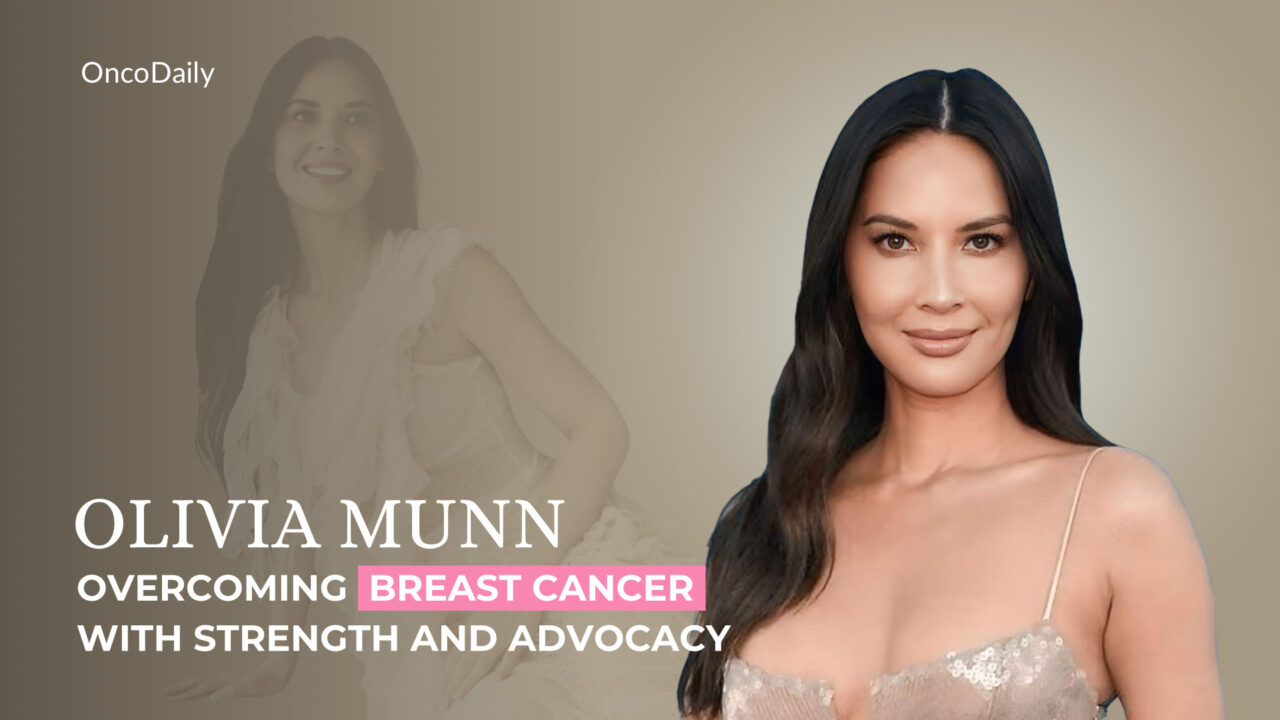
Olivia Munn and Breast Cancer: How She Went Against, How She Survived, and More
Olivia Munn is a renowned American actress and activist, known for her roles in films like X-Men: Apocalypse (2016) and the TV series The Newsroom (2012-2014). In addition to her successful career in Hollywood, Munn became a powerful voice in raising awareness about breast cancer after her own diagnosis. Her bravery in sharing her journey publicly has inspired many, highlighting the importance of early detection, regular screenings, and self-care. Through her advocacy, Munn continues to encourage others to prioritize their health and be proactive in fighting cancer.

Jordan Strauss/Invision/AP/dpa
How Did Olivia Munn Get Diagnosed with Breast Cancer?
Olivia Munn’s breast cancer journey began with a proactive approach to her health. In 2020, she underwent a comprehensive breast cancer risk assessment, which led to a personalized Breast Cancer Risk Assessment Score. This score helped her understand her likelihood of developing breast cancer, motivating her to undergo more extensive testing. After receiving results that indicated a higher-than-average risk, Munn opted for additional screenings, including mammograms and genetic testing. Her early detection efforts played a crucial role in identifying potential issues before they became more serious. Munn’s experience underscores the importance of thorough testing and regular check-ups in the early identification and prevention of breast cancer.
Symptoms
Luminal B breast cancer is a subtype of breast cancer known for its aggressive nature and potential lack of early symptoms. Many patients may not exhibit noticeable signs, leading to diagnoses through routine screenings like mammograms. When symptoms do occur, they can include a new lump in the breast or armpit, changes in breast size or shape, thickening of breast tissue, nipple discharge, and skin changes such as dimpling or redness.The aggressive characteristics of Luminal B breast cancer mean that it can grow quickly and may not present with clear early indicators.
What Was Olivia Munn’s Initial Reaction to Her Diagnosis?
Olivia Munn’s emotional reaction to her breast cancer diagnosis has been profound and multifaceted. Upon learning of her diagnosis in April 2023, she initially focused on her responsibilities and the decisions ahead, stating,
“Surprisingly, I’ve only cried twice. I guess I haven’t felt like there was time to cry. My focus narrowed and I tabled any emotions that I felt would interfere with my ability to stay clearheaded”
This reflects her determination to remain strong during a challenging time.In interviews, Munn expressed that hearing the word “cancer” immediately made her think of her son, Malcolm. She shared, “Honestly, I just thought of my baby… cancer is the — that’s the word you don’t wanna hear”.
This emotional weight drove her to make quick decisions regarding her treatment, including undergoing a double mastectomy just 30 days after her diagnosis.
Munn has emphasized the importance of early detection and has become an advocate for breast cancer awareness. She noted, “I hope by sharing this it will help others find comfort, inspiration, and support on their own journey” 1. Her experience highlights not only her bravery in facing such a daunting diagnosis but also her commitment to raising awareness about breast health and the significance of proactive medical care.
What Was the Prognosis?
Luminal B breast cancer is hormone receptor-positive but tends to be less responsive to hormonal therapies than Luminal A cancers. However, chemotherapy has been found to be particularly effective for this subtype.Experts emphasize that while Luminal B breast cancer can be aggressive, the prognosis can still be favorable with appropriate treatment, which typically includes surgery, chemotherapy, and hormone suppression therapy. Munn’s journey underscores the critical role of routine screenings and self-advocacy in managing breast health, ultimately contributing to better survival prospects for those diagnosed with this type of cancer.
What Treatment Did Olivia Munn Undergo for Breast Cancer?
Olivia Munn chose a comprehensive treatment plan following her diagnosis of Luminal B breast cancer, which is known for its aggressive nature. Within 30 days of her diagnosis, she underwent a double mastectomy, a procedure that involves the removal of both breasts to eliminate cancerous tissue and reduce the risk of recurrence. This surgical intervention is particularly necessary for Luminal B breast cancer due to its higher proliferation rate and potential for metastasis.
In addition to the double mastectomy, Munn also underwent a lymph node dissection and a nipple delay procedure to optimize her surgical outcomes. The urgency of her treatment was underscored by the presence of multiple tumors, prompting swift action to improve her prognosis. Following surgery, she began hormone suppression therapy to further decrease the likelihood of cancer returning, as Luminal B breast cancer is hormone receptor-positive and can be stimulated by estrogen.
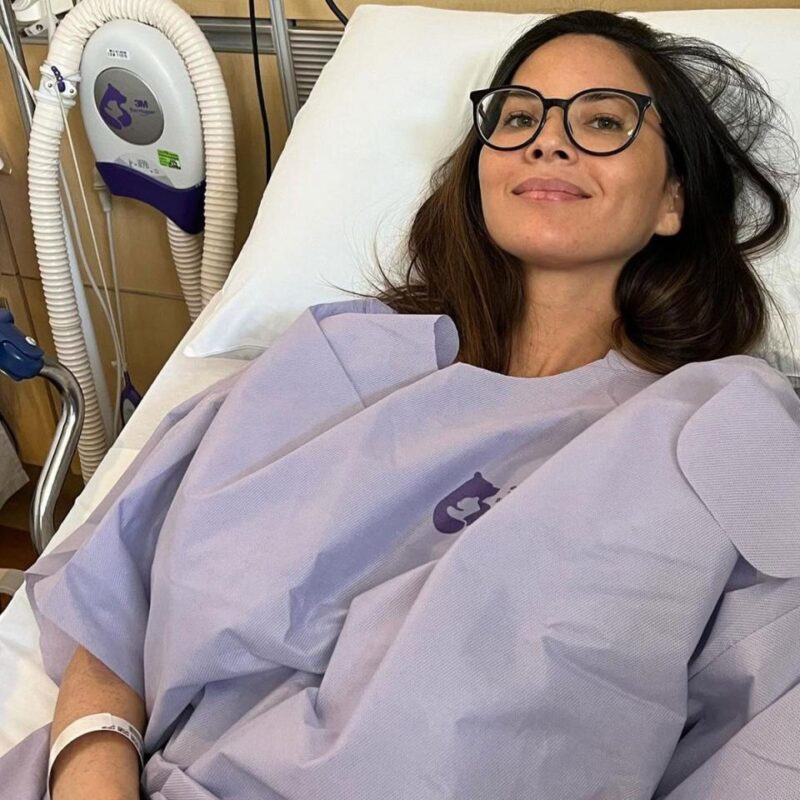
How Did Olivia Munn Overcome Breast Cancer?
Olivia Munn has demonstrated remarkable resilience and a positive outlook in the face of her breast cancer diagnosis. Despite the challenges posed by her condition, she has maintained a focus on her health while balancing her career and family life. Munn has expressed gratitude for her support system, including her partner and son, which has been instrumental in helping her navigate this difficult journey.
Support from Family and Friends
Olivia Munn’s journey through her breast cancer diagnosis has been significantly supported by her close-knit support system, including family, friends, and medical professionals. Munn has expressed profound gratitude for the encouragement and strength she received from her partner, comedian John Mulaney, and their young son, Malcolm. In an emotional post, she acknowledged the role of her friends who have battled breast cancer, stating,
“Thank you to the friends who’ve had breast cancer… for guiding me through some of my most uncertain and overwhelming moments”
Her OB/GYN, Dr. Thais Aliabadi, also played a pivotal role in her support network, providing critical assessments that led to her early diagnosis. Munn referred to Dr. Aliabadi as a “guardian angel,” emphasizing how essential her guidance was during this challenging time. This strong support system not only helped Munn cope emotionally but also empowered her to make informed decisions about her treatment.
Munn’s experience underscores the importance of having a reliable support network during health crises. The emotional backing from loved ones and the expertise of healthcare professionals can significantly impact a patient’s resilience and ability to navigate treatment challenges. Through her openness about her journey, Munn aims to inspire others to seek support and prioritize their health.
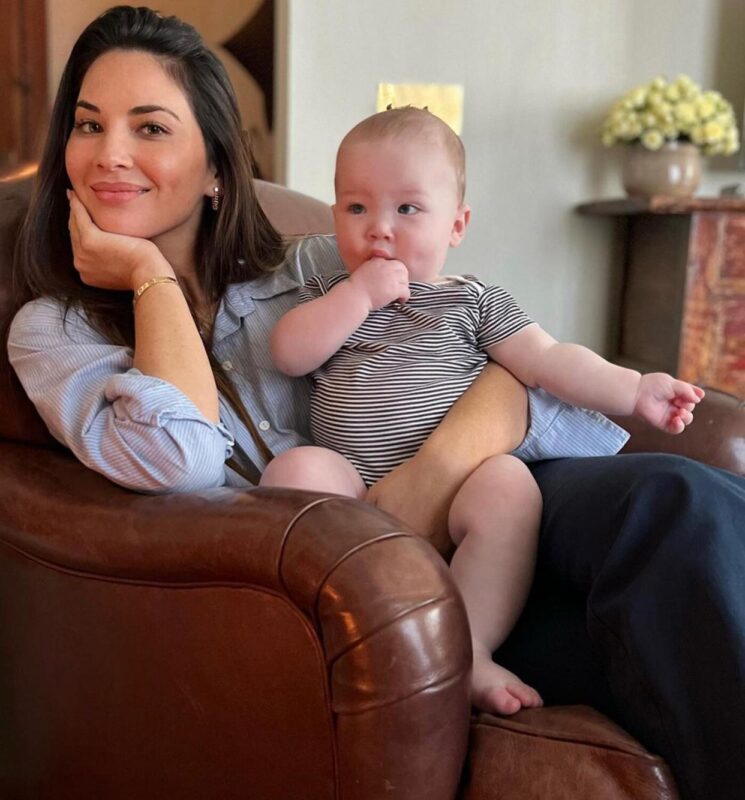
Olivia Munn and baby Malcolm
Mental and Emotional Challenges
Upon receiving the news, she expressed her initial shock, stating, “Cancer is the word you don’t want to hear. It takes down a lot of people. I thought about my baby” . This emotional turmoil was compounded by the urgency of her treatment decisions, as she underwent a double mastectomy just 30 days after her diagnosis.
Despite these challenges, Munn maintained a positive outlook throughout her journey. She emphasized the importance of focusing on what truly matters in life, particularly her role as a mother to her son, Malcolm. Munn shared,
“When I’m with him, it’s the only time my brain doesn’t think about being sick… If I lose my hair, I’m still his mom. That’s really what matters the most to me”.
This perspective helped her cope with the emotional weight of her diagnosis.Munn also adopted several coping mechanisms to navigate her mental health challenges. She leaned heavily on her support system, particularly her partner John Mulaney, who provided unwavering support during her treatment. She remarked on the importance of having someone by her side: “It would’ve felt like climbing an iceberg without him” 1. Additionally, Munn’s decision to share her story publicly serves as a coping strategy, allowing her to connect with others and raise awareness about breast cancer.
How Did Advocacy and Public Awareness Help?
Olivia Munn has made significant efforts to raise awareness for breast cancer, particularly through her involvement in public campaigns and appearances. One of her most notable initiatives is her role as the face of SKIMS’ latest bra campaign, launched in partnership with the Susan G. Komen Foundation. In this campaign, Munn proudly showcases her mastectomy scars, emphasizing her journey and the importance of early detection. She stated,
“This cause is deeply personal to me, and I’m proud to help drive awareness and conversation around it”

Olivia Munn for SKIMS. Photo: Vanessa Beecroft for SKIMS
Collaborations with Health Organizations
Launched during Breast Cancer Awareness Month, the campaign not only aimed to empower women but also committed to donating 10% of retail sales from bras sold during the campaign period to the Susan G. Komen Foundation, a leading organization in breast cancer research and advocacy . Munn’s involvement in this initiative serves as a powerful reminder of the significance of routine screenings and self-examinations for breast health.
Munn has been vocal about the importance of breast cancer risk assessment tools, which contributed to her early diagnosis. She encourages women to educate themselves about their risks and advocate for their health, aiming to inspire others facing similar challenges . Through these efforts, Munn continues to raise awareness about breast cancer and promote preventive care in a meaningful way.
What Is Olivia Munn’s Life Like After Breast Cancer?
Post-treatment, Olivia Munn has embraced both a personal and public journey of healing, focusing on her health, advocacy, and a renewed outlook on life. She continues to be a vocal advocate for breast cancer awareness, sharing her story to encourage others to prioritize regular screenings and early detection. Munn has also adopted a more health-conscious lifestyle, maintaining a balanced diet and consistent exercise regimen to support her physical well-being. Mentally, the experience has deeply shaped her perspective, fostering a greater appreciation for life and the importance of self-care. In interviews, she has reflected,
“Going through something like this makes you realize the value of every single day and how important it is to take care of yourself.”
Munn’s post-treatment life reflects both resilience and a commitment to inspire others through her advocacy and personal example.
Ongoing Health Challenges
Olivia Munn has made several lifestyle adjustments to maintain her well-being following her breast cancer treatment. After undergoing a double mastectomy and additional surgeries, she began hormone suppression therapy in November 2023, which has induced medically induced menopause. This transition has brought about various symptoms, including hot flashes, hair thinning, fatigue, and mood changes, which she openly discusses in interviews as part of her ongoing health journey.
What Causes Breast Cancer?
Breast cancer is influenced by a combination of genetic, hormonal, and environmental risk factors.
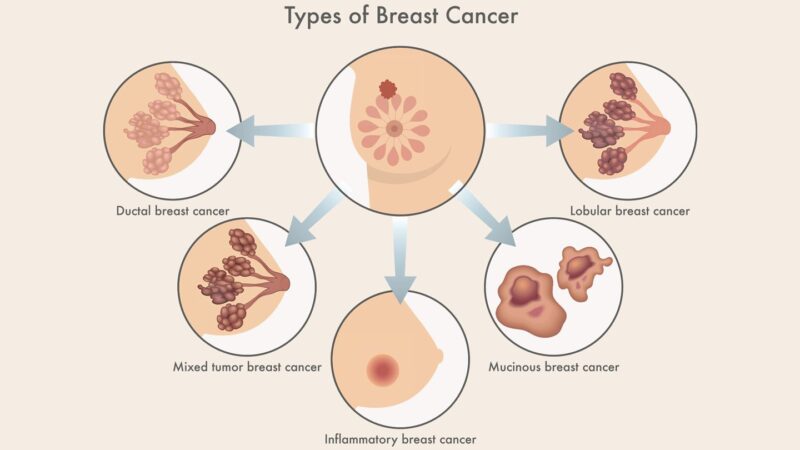
Genetic and Hormonal Factors
Genetic mutations, particularly in the BRCA1 and BRCA2 genes, significantly increase breast cancer risk. Women with a BRCA1 mutation have a 55-65% chance of developing breast cancer by age 70, while those with a BRCA2 mutation have a 45% risk (National Cancer Institute, 2021). Family history is also important; having a first-degree relative with breast cancer can double a woman’s risk (American Cancer Society, 2022).Hormones, especially estrogen, play a critical role in breast cancer development. Prolonged estrogen exposure, such as starting menstruation before age 12 or entering menopause after age 55, can elevate risk (World Health Organization, 2019). Additionally, hormone replacement therapy (HRT) may increase breast cancer risk by 26% (JAMA Oncology, 2019).
Lifestyle and Environmental Factors
Diets high in saturated fats and low in fruits and vegetables increase the risk of breast cancer, while obesity, particularly after menopause, is also linked to a higher risk (American Cancer Society, 2022). Regular alcohol consumption further raises this risk, with women who drink more than one alcoholic beverage daily having a 20-25% higher chance of developing breast cancer (National Cancer Institute, 2021).
Additionally, a lack of physical activity contributes to obesity and hormonal imbalances, further increasing risk, while regular exercise provides protective benefits. Environmental pollutants, such as pesticides, have also been associated with a heightened breast cancer risk (Environmental Health Perspectives, 2019). Radiation exposure, especially to the chest area during youth, is another well-established risk factor (World Health Organization, 2019). Together, these factors highlight the importance of lifestyle choices and environmental awareness in breast cancer prevention.
You Can Read Special Article by Oncodaily Rita Wilson – Tom Hanks’ Wife and Breast Cancer
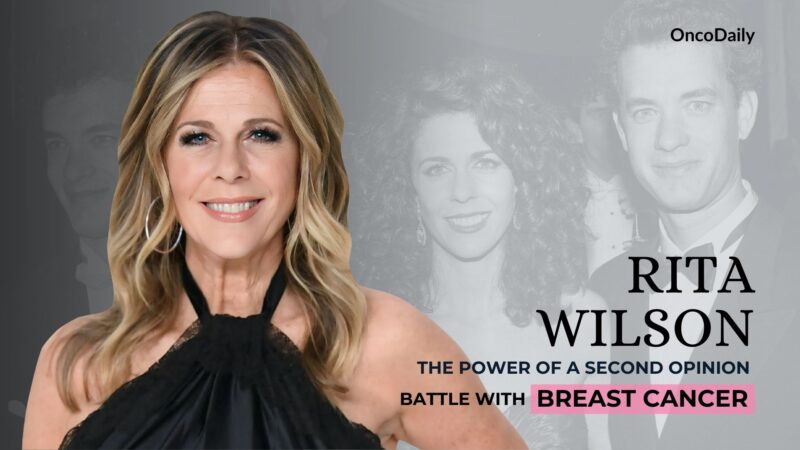
How Can Breast Cancer Be Prevented?
Regular mammograms and other screening methods are vital for the early detection of breast cancer, significantly improving treatment outcomes and survival rates.In addition to regular screenings, specific lifestyle changes can significantly lower the risk of developing breast cancer.
Regular Screenings and Early Detection
BRCA mutations in the BRCA1 and BRCA2 genes significantly raise the risk of breast and ovarian cancers, with women facing up to an 85% lifetime risk for breast cancer and 40-60% for ovarian cancer. Preventive options include increased screening, risk-reducing surgeries like prophylactic mastectomy and salpingo-oophorectomy, medications, lifestyle changes, and genetic counseling.
Many individuals opt for surgeries to lower their cancer risk, and the National Cancer Institute outlines the benefits of these options. Additionally, some may choose chemoprevention with medications such as tamoxifen or aromatase inhibitors, which can reduce breast cancer risk, as noted by the Mayo Clinic.
Women aged 40 and older should have annual mammograms, as early detection through mammography can identify breast cancer before symptoms develop, leading to less invasive treatments. The American Cancer Society reports a 5-year survival rate of 99% for localized breast cancer, compared to just 29% if diagnosed at a later stage (American Cancer Society, 2021). Regular mammography can reduce breast cancer mortality by approximately 15-30% among women aged 40-74 (U.S. Preventive Services Task Force, 2016). Prioritizing screenings allows women to catch breast cancer early, resulting in more effective treatments and better outcomes.
Lifestyle Changes
A healthy diet is vital for reducing breast cancer risk, focusing on fruits, vegetables, whole grains, and lean proteins. Research indicates that women with a diet high in fruits and vegetables have a 20% lower risk of breast cancer (American Institute for Cancer Research, 2018). Regular exercise is also important; at least 150 minutes of moderate aerobic activity weekly can reduce breast cancer risk by about 25% (National Cancer Institute, 2020).
Limiting alcohol intake is crucial, with recommendations of no more than one drink per day. Consuming two to three drinks daily increases the risk of breast cancer by 20-30% (American Cancer Society, 2021). Maintaining a healthy weight is essential, as obesity raises the risk by 30-60% in postmenopausal women (World Health Organization, 2020). Lastly, avoiding tobacco is key; women who smoke are 25% more likely to develop breast cancer compared to non-smokers (Cancer Research UK, 2019).
You Can Read Special Article by Oncodaily Novel Treatments for Breast Cancer: Immunotherapy
You Can Also Watch Special Video by Oncodaily Leading Advances in Breast Cancer and Geriatric Oncology
Written by Aharon Tsaturyan, MD
FAQ
What type of breast cancer was Olivia Munn diagnosed with?
Olivia Munn was diagnosed with Luminal B breast cancer, an aggressive subtype known for its rapid growth and higher risk of recurrence. Her diagnosis came after a series of tests, including a breast cancer risk assessment that revealed a high risk score, prompting further investigation.
What treatments did Olivia Munn undergo?
Munn underwent a double mastectomy just 30 days after her diagnosis, along with a lymph node dissection and other surgeries. The decision for a double mastectomy was made to remove all known cancerous tissue and reduce the risk of future occurrences.
What are the symptoms of Luminal B breast cancer?
Luminal B breast cancer may not present clear early symptoms, making routine screenings essential. When symptoms do occur, they can include lumps in the breast or armpit, changes in breast size or shape, and skin alterations.
What advocacy work has Munn engaged in post-diagnosis?
Munn has actively participated in campaigns to raise awareness about breast cancer, including her role in SKIMS' bra campaign in partnership with the Susan G. Komen Foundation. She emphasizes the importance of early detection and encourages women to be proactive about their health.
What sizes does SKIMS offer?
SKIMS offers a wide range of sizes, from XXS to 4X, ensuring that everyone can find their perfect fit.
Why is early detection important for Luminal B breast cancer?
Early detection is crucial because Luminal B breast cancer is aggressive and can progress rapidly. Regular screenings and awareness of personal risk factors significantly improve treatment outcomes and survival rates.
-
Challenging the Status Quo in Colorectal Cancer 2024
December 6-8, 2024
-
ESMO 2024 Congress
September 13-17, 2024
-
ASCO Annual Meeting
May 30 - June 4, 2024
-
Yvonne Award 2024
May 31, 2024
-
OncoThon 2024, Online
Feb. 15, 2024
-
Global Summit on War & Cancer 2023, Online
Dec. 14-16, 2023
